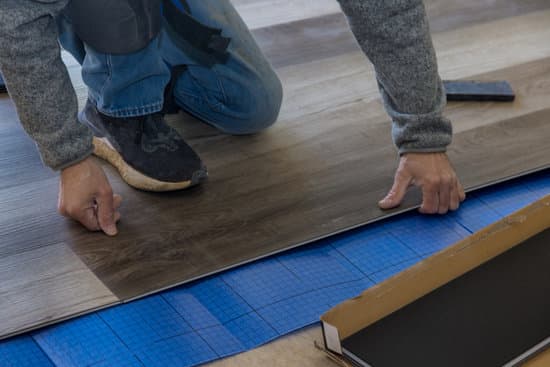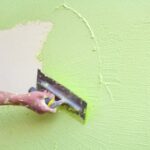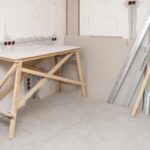When it comes to creating the ultimate home theatre experience, one cannot overlook the significance of sound quality. The right audio setup can make a world of difference in immersing yourself in your favorite movies, TV shows, or music. In this article, we will delve into how to improve sound in home theatres, covering various aspects that contribute to enhancing your audio experience.
Choosing the appropriate audio equipment is crucial for achieving optimal sound quality in your home theatre. From speakers and subwoofers to soundbars, each component plays a vital role in delivering immersive audio that brings your entertainment to life. Understanding the different options available and selecting the right ones for your space and preferences is key to elevating your viewing experience.
Beyond just having the right equipment, optimizing room acoustics is essential in maximizing the potential of your home theatre setup. Dealing with echoes, optimizing layout, and even incorporating soundproofing measures can significantly impact how sound travels within your space. By taking these factors into consideration and making necessary adjustments, you can create a more conducive environment for superior audio quality.
Choosing the Right Audio Equipment
When it comes to creating a remarkable home theatre experience, selecting the right audio equipment is crucial. High-quality speakers, subwoofers, and soundbars can make a significant difference in the overall sound quality of your setup. For those wondering how to improve sound in home theatre, investing in premium audio devices is a great starting point.
Speakers play a key role in delivering clear and immersive audio in your home theatre. When choosing speakers, consider factors such as size, power output, frequency response, and overall sound quality. Bookshelf speakers are versatile options suitable for smaller rooms, while floor-standing speakers provide more powerful and dynamic audio for larger spaces. Additionally, selecting a high-quality subwoofer can enhance the bass response and provide a richer audio experience during movie nights or gaming sessions.
Soundbars are another popular choice for home theatre setups due to their sleek design and easy installation process. These compact devices can deliver virtual surround sound and simulate a theater-like experience without the need for multiple speakers scattered around the room.
When selecting a soundbar, look for features such as built-in amplifiers, Bluetooth connectivity, and compatibility with your existing audio devices. By carefully choosing the right audio equipment for your home theatre system, you can elevate your entertainment experience to new heights.
| Audio Equipment | Key Features |
|---|---|
| Speakers | Size, power output, frequency response |
| Subwoofers | Bass enhancement, richer audio experience |
| Soundbars | Sleek design, virtual surround sound capabilities |
Room Acoustics
Another key element in optimizing room acoustics is addressing standing waves, which are low-frequency resonances that can create boomy or muddy sound quality. To combat this issue, consider using bass traps in corners or strategic locations within the room to absorb excess bass frequencies. Additionally, adjusting speaker placement and viewing/listening positions can help minimize the impact of standing waves on sound quality.
For those seeking a more advanced solution for optimizing room acoustics in a home theatre, consider investing in acoustic treatments specifically designed for audio environments. These treatments include diffusers to scatter sound waves evenly across the room and absorption panels to reduce reflections. By taking these steps to fine-tune the acoustics of your home theatre space, you can significantly enhance the overall sound quality and create a more immersive viewing experience for yourself and your guests.
| Acoustic Treatment | Impact on Sound Quality |
|---|---|
| Bass Traps | Absorb low-frequency resonances and improve bass clarity |
| Acoustic Panels | Reduce echoes and reflections for cleaner audio output |
| Diffusers | Scatter sound waves evenly for a more balanced sonic experience |
Calibration and Positioning
Optimizing Speaker Placement
One of the key aspects of improving sound in a home theatre is to ensure proper speaker placement. The positioning of speakers can significantly impact the overall audio experience. When setting up your speakers, consider the angle and distance from the listening area. For example, front speakers should be placed at ear level while rear speakers should be behind and slightly above the seating area for optimal surround sound.
Fine-Tuning Speaker Settings
In addition to physical placement, it is crucial to fine-tune your speaker settings for optimal audio performance. This includes adjusting levels such as volume, bass, treble, and balance to customize the sound according to your preferences. Most modern home theatre systems come with automated calibration tools that help adjust settings based on room acoustics and speaker configuration.
Utilizing Room Calibration Software
To further enhance sound quality in your home theatre, consider using room calibration software. These programs analyze acoustic properties of your room and optimize speaker settings accordingly. Room calibration software can help eliminate echoes, optimize frequency response, and create a more immersive listening experience. Make sure to follow the instructions provided with the software for accurate results.
By paying attention to speaker placement, settings, and utilizing room calibration software, you can significantly improve the sound quality in your home theatre setup. Experiment with different configurations and settings to find the perfect balance that suits your personal preferences. Remember that small adjustments can make a big difference in creating a truly immersive audio experience for movies, music, and gaming.
Soundproofing
When it comes to creating the ultimate home theatre experience, soundproofing plays a crucial role in enhancing the overall audio quality and immersiveness. By minimizing external noises and reflections, you can fully enjoy your favorite movies, music, and games without any distractions. Here are some tips on how to soundproof your home theatre for optimal audio performance:
- Use acoustic panels or foam: Installing acoustic panels or foam on the walls can help absorb sounds and reduce echoes, creating a more balanced listening environment.
- Seal gaps and cracks: Check for any gaps or cracks in windows, doors, or walls that could let unwanted noise seep into your home theatre space. Use weather stripping or caulking to seal them off.
- Invest in soundproof curtains: Heavy curtains with soundproofing properties can help block out external noises and keep the sound within the room, enhancing the acoustic quality of your home theatre.
In addition to these tips, consider adding carpeting or rugs to the floor to further dampen sounds and prevent reflections. You can also explore adding a secondary layer of drywall with special soundproofing materials between the existing walls for improved insulation against noise transmission. By taking these steps to soundproof your home theatre, you can create a more immersive audio experience that truly brings your entertainment content to life.
- Utilize furniture strategically: Place heavy furniture like bookshelves or sofas along walls to help absorb sounds and minimize reflections within your home theatre space.
- Consider adding a dedicated bass trap: Low-frequency sounds from subwoofers can cause vibrations that amplify through walls and floors. Installing bass traps in corners can help absorb these frequencies and reduce vibrations for cleaner audio output.
- Opt for double-glazed windows: If outside noise is a frequent issue in your home theatre room, consider upgrading to double-glazed windows to better insulate against unwanted sounds from entering your space.
By implementing these soundproofing techniques in your home theatre setup, you can create an optimal listening environment that enhances the overall audio quality of your entertainment system. Experiment with different approaches based on your specific needs and preferences to achieve the best sound performance possible.
Upgrading Your Audio Cables and Connections for Better Sound Transmission
When it comes to improving sound quality in your home theatre setup, one important factor to consider is the quality of your audio cables and connections. Upgrading these components can make a significant difference in how your audio signals are transmitted and ultimately heard. Here are some tips on how you can enhance sound transmission through better audio cables and connections.
Invest in High-Quality Audio Cables
One way to improve sound transmission in your home theatre is by investing in high-quality audio cables. Look for cables that have good shielding to minimize interference and signal loss. Opt for thicker gauge cables, as they can help reduce resistance and deliver a cleaner audio signal. Consider upgrading to oxygen-free copper (OFC) cables, which are known for their superior conductivity compared to standard copper cables.
Upgrade Your Connections
In addition to upgrading your audio cables, consider upgrading your connections as well. Ensure that connectors are clean and free from corrosion, as this can affect the quality of the audio signal. For better transmission, consider using gold-plated connectors, which offer improved conductivity and better resistance to corrosion over time. Additionally, tight and secure connections are essential for optimal sound transmission.
Consider Bi-Wiring or Bi-Amping
For even better sound transmission, you may want to consider bi-wiring or bi-amping your speakers. Bi-wiring involves using separate speaker cables for the low-frequency drivers (bass) and high-frequency drivers (treble) of each speaker, while bi-amping involves using separate amplifiers for the different frequency ranges. This configuration can help reduce interference between the different frequencies, resulting in clearer sound reproduction throughout your home theatre system.
By upgrading your audio cables and connections in your home theatre setup, you can significantly improve sound transmission and overall audio quality. Remember to choose high-quality cables with good shielding, upgrade your connectors for better conductivity, and consider advanced configurations like bi-wiring or bi-amping for even greater performance potential. Taking these steps will undoubtedly enhance your home theatre experience and bring you closer to achieving optimal sound quality within your dedicated entertainment space.
Audio Equalization and Calibration
When it comes to creating the ultimate home theatre experience, sound quality plays a crucial role in immersing viewers in their favorite movies or shows. One of the key aspects of achieving optimal sound quality is through audio equalization and calibration. By using tools and techniques to enhance the sound output from your speakers, you can elevate your viewing experience to a whole new level.
Here are some strategies on how to improve sound in a home theatre through audio equalization and calibration:
- Utilize a sound meter: Invest in a sound meter to measure the output levels of each speaker in your setup. This will help you ensure that all speakers are balanced and producing the same sound intensity.
- Experiment with EQ settings: Most AV receivers come with built-in equalizer settings that allow you to adjust the frequency response of your speakers. Play around with these settings to find the perfect balance for different types of media.
- Consider room correction software: Some AV receivers offer room correction software that analyzes the acoustics of your room and automatically adjusts the audio output to compensate for any imperfections. This can greatly improve sound quality and create a more immersive listening experience.
By taking advantage of these tools and techniques for audio equalization and calibration, you can fine-tune your home theatre system to deliver crystal-clear audio that truly brings your favorite movies and music to life. Experiment with different settings, utilize measurement tools, and consider investing in room correction software for a truly customized and optimized sound experience.
Troubleshooting Common Sound Issues in Home Theatres
When it comes to enjoying a true cinematic experience in the comfort of your own home, sound quality plays a crucial role in elevating your viewing experience. However, even with the best audio equipment and setup, you might encounter some common sound issues that can hinder your enjoyment. In this section, we will discuss how to troubleshoot these issues effectively to ensure that you get the most out of your home theatre system.
One common issue that many homeowners face is poor dialogue clarity, where voices sound muffled or unclear. This problem can often be attributed to improper speaker placement or calibration settings. To address this issue, start by ensuring that your center channel speaker is correctly positioned at ear level and directly facing the main seating area. Additionally, check the audio settings on your receiver to make sure that the center channel volume is properly balanced with the rest of your speakers.
Another common sound issue that can arise in home theatres is excessive bass or booming sounds, which can overwhelm other audio elements and distort the overall sound quality. If you are experiencing this problem, consider adjusting the crossover settings on your subwoofer to find the optimal balance between bass impact and clarity. You may also need to experiment with subwoofer placement in different areas of the room to achieve a more balanced sound profile.
Additionally, if you notice persistent audio dropouts or interruptions during playback, there may be interference caused by electronic devices or wireless signals in your home. To address this issue, try relocating any wireless routers or other devices that could be causing signal interference with your audio equipment.
It’s also essential to check for any loose connections or faulty cables that could be contributing to sound interruptions. By following these troubleshooting steps and taking proactive measures to address common sound issues in home theatres, you can enjoy a more immersive and high-quality viewing experience every time you sit down to watch a movie or listen to music.
Conclusion
In conclusion, the sound quality of a home theatre setup plays a significant role in enhancing the overall entertainment experience. By implementing the tips and techniques outlined in this article, you can drastically improve the audio performance of your system. From choosing the right audio equipment like speakers, subwoofers, and soundbars to optimizing room acoustics and fine-tuning calibration and positioning, there are various ways to elevate the sound output.
Taking into consideration factors such as soundproofing to minimize external noises and reflections, upgrading audio cables and connections for better transmission, and utilizing audio equalization tools for enhanced sound quality are also crucial steps in achieving a top-notch home theatre audio experience. Additionally, troubleshooting common sound issues is essential in identifying any problems that may be affecting the quality of your audio output.
Ultimately, it is important to take action towards improving your home theatre sound quality by following the guidelines provided in this article. By investing time and effort into optimizing your setup using these methods, you can create a more immersive and immersive viewing experience for yourself and your family or friends. So don’t hesitate to put these recommendations into practice and enjoy superior sound performance in your home theatre system.
Frequently Asked Questions
How Can I Improve the Sound Quality of My Home Theater?
To improve the sound quality of your home theater, consider upgrading your speakers to high-quality ones that match the size of your room. Additionally, optimizing speaker placement, adjusting the equalizer settings, and investing in a subwoofer can enhance the sound experience. Acoustic treatments like rugs, curtains, and wall panels can help reduce echo and improve overall sound clarity.
How Can I Make My Home Stereo Sound Better?
Making your home stereo sound better involves several steps. Begin by ensuring that your speakers are positioned correctly and away from walls or corners to prevent distortion. Using high-quality speaker cables and components can also make a difference in sound quality. Experiment with different equalizer settings to find the optimal balance for your listening preferences.
What Is the Best Sound Setting for Home Theater?
The best sound setting for a home theater depends on personal preference and the type of content being watched or listened to. However, a good starting point is setting the audio mode to “Movie” or “Home Theater” to enhance dialogue clarity and surround sound effects.
Adjusting individual speaker levels and experimenting with different sound modes can help tailor the audio experience to suit your preferences.

I’m thrilled to have you here as a part of the Remodeling Top community. This is where my journey as an architect and remodeling enthusiast intersects with your passion for transforming houses into dream homes.





